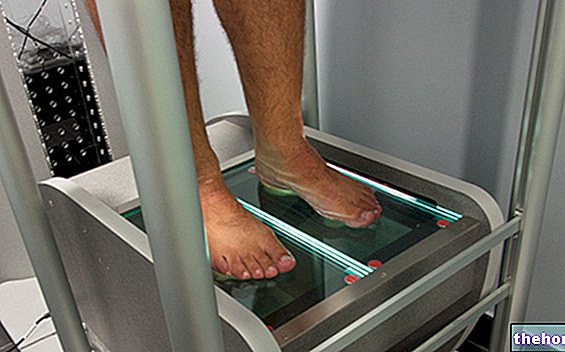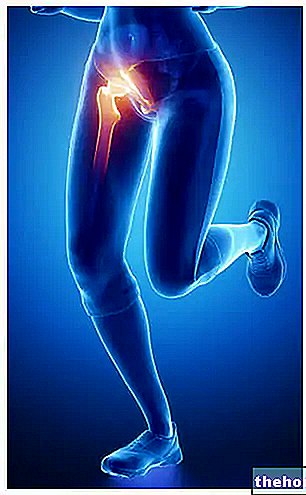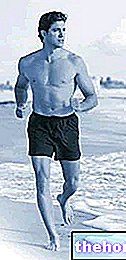Supraventricular ectopic beats (BESV)
The finding of simple BESVs (sporadic, monomorphic and non-repetitive) during the basic ECG that do not increase with effort (Step test), in a heart normal to physical examination, does not contraindicate sports activity. Otherwise the granting of the "eligibility is conditional on the results of 2nd level exams.
Eligibility may be granted, in the absence of heart disease, if non-occasional repetitive phenomena do not appear during or after exertion (couples, triplets, runs) and / or significant hypokinetic arrhythmias are not associated (sinoatrial block, A-V block).
Supraventricular tachyarrhythmias
They include paroxysmal forms and chronic and / or persistent forms, represented by reentry tachycardias, ectopic atrial tachycardias, atrial fibrillation and atrial flutter.
In these cases, the athlete must first of all undergo a 2nd level cardioarhythmological study. Furthermore, if he reports tachycardia heart rate, especially if in connection with athletic gesture, not documented electrocardiographically, he must undergo a basal transesophageal and exercise electrophysiological study unless TE or MH are not sufficiently diagnostic in this regard.
Paroxysmal reentry supraventricular tachycardias in the absence of overt WPW
In the majority of cases they are determined by a junctional reentry, in the others they are linked to the presence of an anomalous occult pathway or to an atrial reentry. All of these forms are frequently reinducible with basal and / or exertional transesophageal atrial pacing. Eligibility may be granted when:
- an underlying heart disease can be excluded;
- a possible triggering cause can be eliminated (hyperthyroidism, alcohol, drugs and arrhythmogenic substances, etc.);
- there is no constant cause-effect relationship between sporting activity and arrhythmia;
- the arrhythmic attack does not induce subjective alarm symptoms (dizziness, fainting, syncope), has a frequency not exceeding the maximum and has a limited spontaneous duration;
- there is no demonstrable associated hypokinetic component in the context of atrial disease or A-V block;
- there are no demonstrable anomalous A-V conduction routes viable in an antegrade direction (otherwise, refer to pre-excitation)
Persistent, focal or reentry supraventricular tachyarrhythmias
They include reentry tachycardia through an abnormal slow decremental "Coumel-like" extranodal pathway and focal atrial tachycardia from increased automatism in the right or left atrial.
These persistent, continuous or iterative forms are normally incompatible with competitive fitness and can also develop over time a form of "secondary arrhythmic cardiomyopathy". They can currently be subjected to catheter ablation with radiofrequency with the possibility of complete and definitive healing. each individual sportsman to undergo catheter ablation must in any case be rigorously assessed the risk-benefit ratio.
Some forms of persistent chronic hyperkinetic arrhythmias such as atrial or junctional ectopic rhythms that produce CF close to the sinus of the subject, not accompanied by underlying heart disease or haemodynamic consequences, do not contraindicate sporting activity, with the obligation of 2nd level examinations and periodic clinical and instrumental checks.
Paroxysmal Atrial Fibrillation and Flutter
The current or anamnestic finding of one of these arrhythmias, especially when it occurs in a sustained (duration of the episode> 30 sec) or symptomatic form, implies a 2nd level cardioarhythmological study and possibly a provocative electrophysiological study via the transesophageal or endocavitary route, suitable for inducing arrhythmia and for identifying the relationship with exercise (transesophageal electrophysiological study + ergometric test). Eligibility may be granted when:
- an underlying heart disease can be excluded;
- a possible triggering cause can be eliminated (hyperthyroidism, alcohol, drugs and arrhythmogenic substances, etc.);
- there is no constant cause-effect relationship between sporting activity and arrhythmia;
- the arrhythmic attack does not induce subjective alarm symptoms (dizziness, fatigue, syncope, angor, circulatory decompensation, etc.), has a frequency not exceeding the maximum and has a limited spontaneous duration;
- there is no demonstrable associated hypokinetic component in the context of an atrial disease or A-V block;
- there are no demonstrable anomalous A-V conduction routes viable in an antegrade direction (otherwise, refer to pre-excitation).
Chronic Atrial Fibrillation and Flutter
The current significance of these forms contraindicates competitive fitness. Chronic atrial fibrillation may be an exception, in which, after a 2nd level cardioarhythmological study, fitness may be granted to a limited extent for sports with minimal cardiovascular commitment, such as those of group B2. , and without appreciable intrinsic risk, when:
- an organic genesis can be excluded;
- the arrhythmia does not induce subjective symptoms;
- the heart rate, assessed during TE and MH, does not exceed 200 bpm, or does not experience significant hypokinetic phenomena (ventricular bradyarrhythmia: HR 3000 msec) or bradycardia-dependent ectopic ventricular arrhythmias;
- anomalous conduction routes are not demonstrable.
Cardiac pre-excitation
Wolff-Parkinson-White (WPW)
It should be noted that this is a primary arrhythmic condition with a prevalence of 1.5 per thousand in the youth population, which can be complicated by various types of arrhythmias, of which the most important are:
- Atrioventricular reentry tachycardia using mostly the nodal pathway in an antegrade direction and the anomalous pathway, which can be occult, retrograde (orthromic A-V reentry tachycardia). Rarer is the form using the anomalous pathway in an antegrade direction (antidromic A-V reentry tachycardia);
- atrial fibrillation (AF) which can be partially or totally pre-excited and decisively affects the prognosis of WPW, given the danger of arrest or circulation induced by ventricular fibrillation.
Subjects may be spontaneously symptomatic for one or the other or both types of arrhythmia or present asymptomatic at the time of the suitability judgment.
The current or anamnestic observation of an electrocardiographic aspect of cardiac pre-excitation (delta wave) stable or unstable, both asymptomatic and symptomatic for tachyarrhythmias, first of all requires a 2nd level cardioarhythmological study to identify the presence of any underlying heart disease or document spontaneous clinical arrhythmias or reproducible. The granting of competitive fitness is however conditional on the execution of a basal and stress transesophageal electrophysiological study (bed ergometer). Subjects with:
- underlying heart disease;
- AF and / or spontaneous sustained supraventricular tachycardias (greater than or equal to 30 sec);
- documented triggering function of the athletic gesture on even non-sustained tachyarrhythmias (<30 sec).
As regards the electrophysiological criteria derived from the transesophageal study, subjects with at least 2 of the following criteria are considered to be at risk, therefore not suitable:
- AF induced with minimum R-R between pre-excited beats equal to or less than 240 msec at rest and 200 msec during exertion;
- Sustained induced AF (greater than or equal to 30 sec);
- high atrial irritability (easy AF induction especially with a non-aggressive study protocol);
- an additional criterion of considerable importance is the possibility of induction of an A-V reentry tachycardia (expression of the existence of a retrograde conduction of the anomalous pathway).
On the other hand, subjects with:
- absence of basal and exertion inducibility of pre-excited AF and / or A-V reentry tachycardia;
- inducibility with extreme difficulty of pre-excited AF with minimum R-R greater than 240 msec of base and 200 msec during exertion; - duration of induced tachyarrhythmias less than 30 sec.
In "borderline" cases from an electrophysiological point of view, especially in those who carry out sports with a high intrinsic risk (piloting, diving, mountaineering, etc.), the judgment must be rigorously individualized and the electrophysiological study repeated annually.
Periodic transesophageal electrophysiological evaluation (every 3 years) is also recommended for suitable cases, in subjects in developmental age or after 30 years (possibility of spontaneous modification of the electrophysiological parameters of the WPW).
Short P-R
This anomaly does not contraindicate sporting activity in asymptomatic subjects, in the absence of clinical and instrumental signs of heart disease. In symptomatic subjects or with proven arrhythmias, what has been said for paroxysmal supraventricular tachycardia or WPW applies.
Curated by: Lorenzo Boscariol
Other articles on "Electrocardiographic Abnormalities - Part 2 -"
- electrocardiographic abnormalities
- cardiovascular system
- athlete's heart
- cardiological examinations
- cardiovascular pathologies
- cardiovascular pathologies 2
- cardiovascular pathologies 3
- cardiovascular pathologies 4
- electrocardiographic abnormalities 3
- ischemic heart disease
- screening of the elderly
- competitive fitness
- cardiovascular sports commitment
- cardiovascular commitment sport 2 and BIBLIOGRAPHY




























